Grasses that Attract Butterflies add dynamics to your landscape and turn your garden into a biodiversity haven! Read on to find out!
When we think of grass, manicured lawns come to mind. But the grass is so much more than just pricey green decor! Many native flowering varieties are crucial hosts to beneficial pollinators and lend vivid textures to dull landscapes. With this list of grasses that attract butterflies, you can turn your garden into a gorgeous biodiversity hub!
Why Attract Butterflies with Grass?
If butterflies visit your garden, bees, birds, and insects essential for pollination will invariably follow suit. These pollinators help natural ecosystems thrive, providing shelter and nourishment to other wild creatures and microorganisms.
And grass varieties, especially the native kinds that also produce flowers, are perfect for taking up space between flowering plants that may be colonized by weeds post-bloom season. Their dense foliage and fine texture give your landscape a look of abundance and are excellent for soil erosion and stabilizing slopes!
Interested in pollinators? Check out our article on DIY plant combinations to attract butterflies and bees!
Grasses that Attract Butterflies
1. Prairie Dropseed
Botanical Name: Sporobolus heterolepsis
This North American native is a legend in the butterfly world. It is one of the few plants that host the federally threatened Dakota skipper and Poweshiek skipperling butterfly species. This grass has fine, green leaves that morph into a golden orange in the fall and can grow up to 2-3 feet tall.
The seeds of this perennial flowering grass give off a strong scent of popcorn–so if you are hungry, stay away unless you wish to torment yourself!
2. Switchgrass
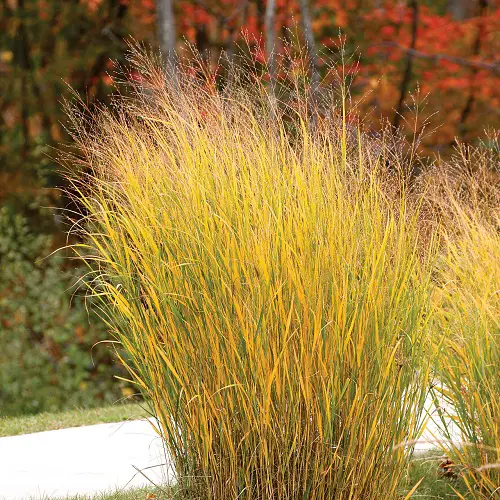
Botanical Name: Panicum virgatum
Another butterfly haven, switchgrass is a perennial warm-season bunchgrass with tall, feathery plumes that can reach up to seven feet tall and change color through the seasons. This ornamental plant is commonly spotted along moist roadsides and streambanks.
Butterflies flock to this grass for the nectar from its flowers and the juice of its purple-pink fruits. It is a larval host plant for skipper varieties and the common wood-nymph butterfly.
Check out our list of more flowering grasses if you’re interested in growing them!
3. Little Bluestem

Botanical Name: Schizachyrium scoparium
As the name suggests, the little bluestem has foliage with a bluish tint that turns into brilliant bronze in the fall. This clumping warm-season perennial is a top choice as a larval host for skipper butterflies like the Dakota skipper, Leonard’s skipper, and the common wood nymph.
While deer- and rabbit-resistant, this resilient grass also provides an overwintering habitat for other useful insects like fireflies and wildlife. It survives in both arid and moist conditions!
4. Blue Grama Grass
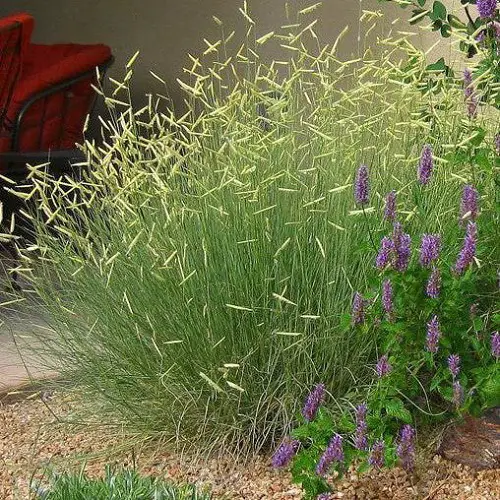
Botanical Name: Bouteloua gracilis
Now, let’s spice it up a little if your eyes are tired of the same old monotonous color of other ornamental grasses. Try the blue grama grass. With comby seedheads, it grows up to two feet tall and produces flag-like yellow flowers that beckon butterflies and moths.
This drought-tolerant grass is easy to grow under full sun, but deer are frequent visitors in your area; they may trample it. You can also grow it in pots!
5. Sweetgrass

Botanical Name: Muhlenbergia sericea
Native to southeastern parts of the USA, this perennial ornamental packs a punch as a butterfly magnet, as well as for its ecological usefulness, resilience, and, most of all, its dreamy appearance. Producing fragrant, delicate plumes of hazy pink flower spikes in fall, this cloud-like grass attracts butterflies, birds, and animals alike!
This grass thrives naturally in sandy coastal habitats. It is drought-tolerant and also does well in rocky or clay soils.
6. Sideoats Grama

Botanical Name: Bouteloua curtipendula
Sideoats grama is a magnet for butterflies like the Green Skipper, which also uses this ornamental grass to host its larvae. This perennial, short prairie grass has oat-like seeds that dangle from one side of the stem. It grows up to three feet tall in full sun with average soil and medium watering.
Drought-tolerant and easy to grow, it stands out for its bright orange-red autumn color.
7. River Oats
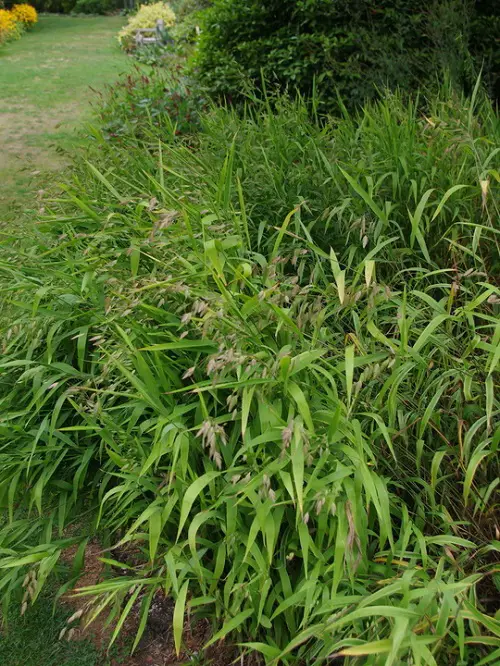
Botanical Name: Chasmanthium latifolium
River oats grass gets its name from the oats-like nodding seedheads, and maybe that’s why butterflies are drawn to it–for a nutritional breakfast? Jokes apart, the caterpillars of Northern pearly-eye and some skipper varieties feed on its bamboo-like green leaves.
Its leaves turn copper-gold in fall and produce a soothing rustling sound in the breeze. It can grow up to three feet in height.
8. Indian Rice Grass
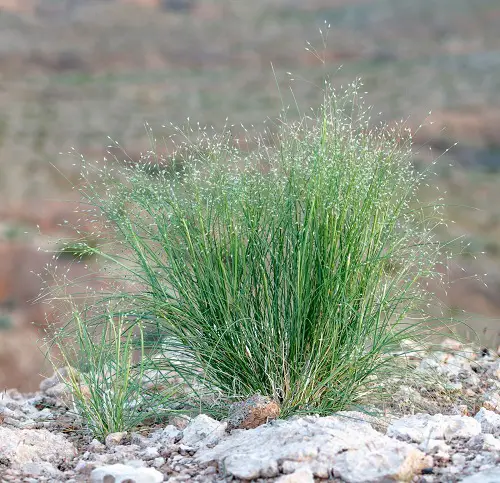
Botanical Name: Achnatherum hymenoides
Next on the list is the Indian ricegrass—another skipper butterfly magnet! With wiry, unkempt foliage and tiny white seedheads, Native Americans historically used this grass as food.
While this grass naturally grows in sandy and dry environments, it can tolerate consistent moisture to an extent, which means it is better to keep it on a drier side.
9. Big Bluestem
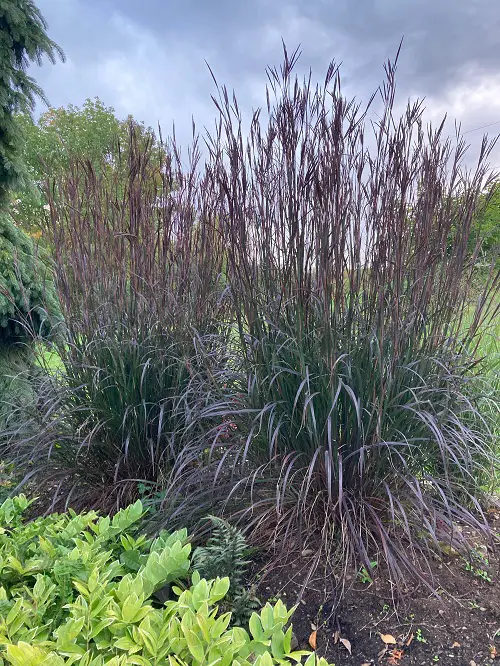
Botanical Name: Andropogon gerardii
And we are nearly at the end of this grassy list! Now, we have the dynamic Big Bluestem. It attracts a series of skipper butterflies, makes an excellent habitat for other wildlife and livestock, and provides forage cover for ground-nesting birds like the bobwhite quail!
This grass can grow up to eight feet tall, with blue-green leaves that turn reddish-orange in fall. Also, thanks to the peculiar shape of its seed heads, it is called Turkey Foot. It makes a hearty feast for songbirds.



